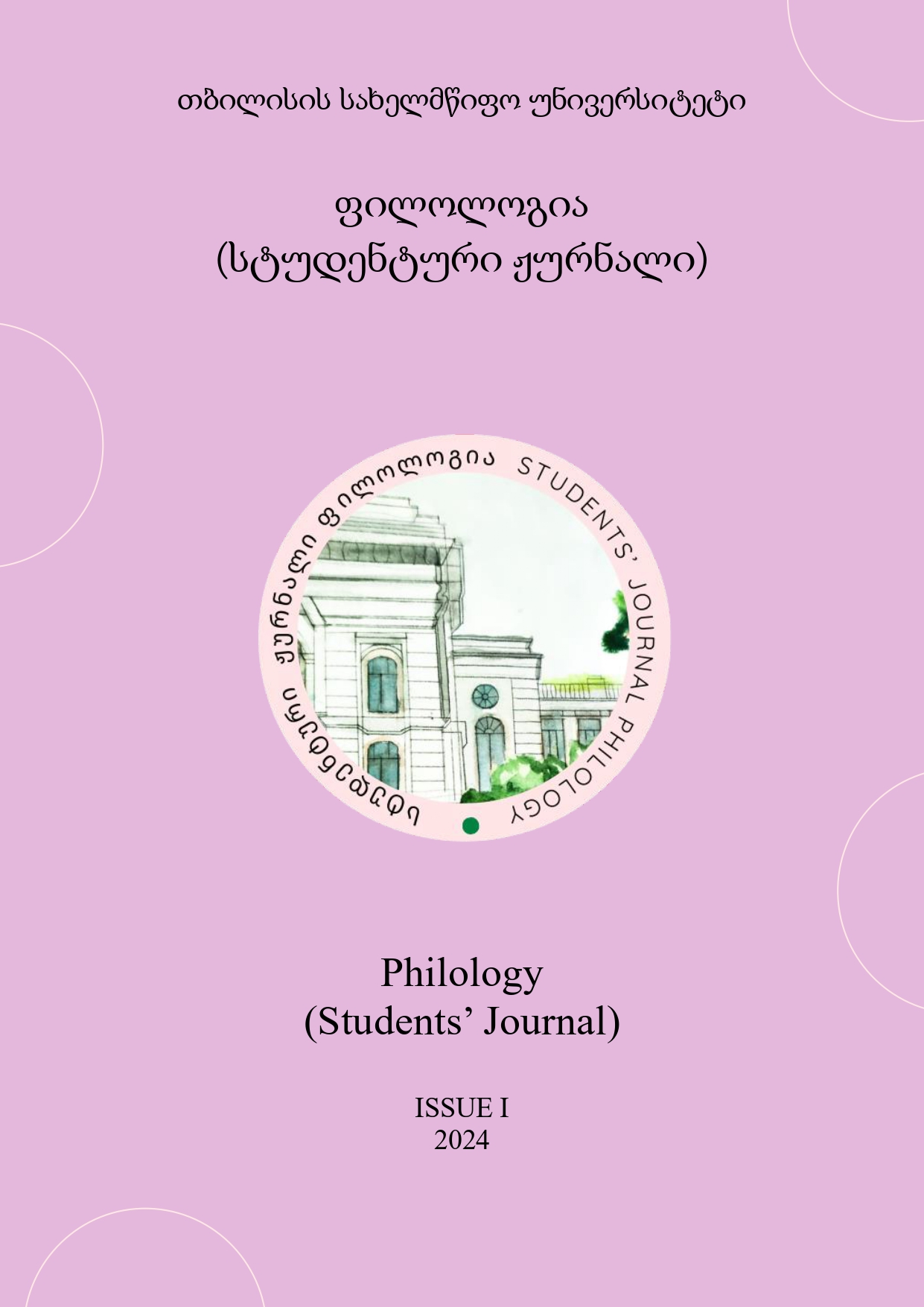გენდერული სტერეოტიპების ვერბალური გამოხატვა დისნეის ანიმაციურ ფილმებში
საკვანძო სიტყვები:
გენდერი, გენდერული სტერეოტიპები, დისნეი, ანიმაციური ფილმებიანოტაცია
Gender, gender stereotypes, their underlying causes, and results have become relevant research subjects in the 21 st century. Throughout centuries stereotypical attitudes towards women were being formed in society. At the beginning of the 20 th century spreading stereotypical attitudes was facilitated by media and various films including Disney’s animated movies (Towbin et al., 2004, p. 20), which will be discussed in the article.
The main objective of the research is the princess line in Disney’s animated movies. Over time different researchers (England et al., 2011; Reilly, 2016) divided the development of princesses into different categories, and the influence of the animated movies on the formation of gender roles in children was discussed. Moreover, whether animated movies contributed or not to the development of gender stereotypes was examined.
In the given research gender stereotypes reflected in Disney’s animated movies will be discussed. Furthermore, verbal characteristics that might reveal stereotypical attitudes will be analyzed.
წყაროები
Basow, S. A. (1992). Gender Stereotypes and Roles (3rd ed., pp. 1-9, 182-184). Brooks/Cole Publishing Company.
Buck, C., & Lee, J. (Directors). (2013). Frozen [Film]. Walt Disney Pictures, Walt Disney Animation Studios.
England, D. E., Descartes, L., & Collier-Meek, M. A. (2011). Gender Role Portrayal and the Disney Princesses. Springer, 555-567. https://doi.org/10.1007/s11199-011-9930-7
Golden, J. C., & Jacoby, J. W. (2013). Playing Princess: Preschool Girls’ Interpretations of Gender Stereotypes in Disney Princess Media. Springer. https://doi.org/10.1007/s11199-0170773-8
Holmes, J. (1995). Women, Men, and Politeness (pp. 1-8). Longman Group UK Limited.
Jackson, W., Luske, H., & Geronimi, C. (Directors). (1950). Cinderella [Film]. Walt Disney Productions.
Lakoff, R. (1973). Language and Woman’s Place. New York.
Leech, G. (1983). Principles of Pragmatics (pp. 7-19). Longman.
Mia Adessa Towbin, Shelley A. Haddock, Toni Schindler Zimmerman, Lori K. Lund & Litsa Renee Tanner (2004): Images of Gender, Race, Age, and Sexual Orientation in Disney Feature-Length AnimatedFilms, Journal of Feminist Family Therapy, 15:4, 19-44 http://dx.doi.org/10.1300/J086v15n04_02
Mills, S. (2003). Gender and Politeness (pp. 202-247). Cambridge.
PARSONS, L. T. (2021). Cinderella’s Transformation: From Patriarchal to 21st Century Expressions of Femininity. OHIO STATE UNIVERSITY, MARION, 5(1), 84-107.
REILLY, C. (2016). CHAPTER FOUR: An Encouraging Evolution Among the Disney Princesses? A Critical Feminist Analysis. Counterpoints, 477, 51–63. http://www.jstor.org/stable/45157186
Yule, G. (1996). Pragmatics (pp. 1-8). Oxford University Press.
დონაძე ნ. კიკნაძე თ. (2006). გენდერი - სოცილაური და პოლიტიკური სწავლებანი. სოციალურ მეცნიერებათა ცენტრი. http://css.ge/wpcontent/uploads/2019/07/gender_soc_pol.pdf
თოთიბაძე ს. (2020). გენდერული სტერეოტიპების ენობრივი გამოხატულება ევროპულ და ქართულ ზღაპრებში. ივანე ჯავახიშვილის სახელობის თბილისის სახემწიფო უნივერსიტეტი.


